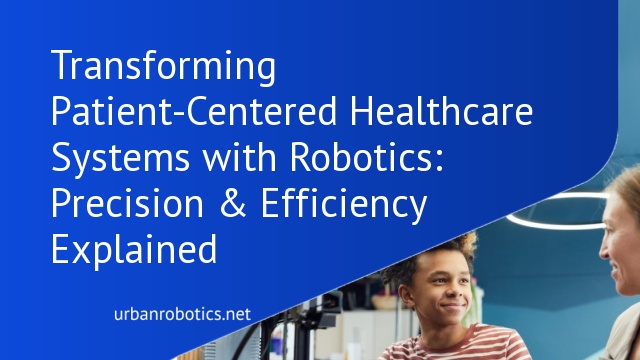Overview of Patient-centered Healthcare Systems
Patient-centered healthcare focuses on the individual needs of patients, ensuring they receive tailored care. This approach values the patient’s experience, preferences, and values in clinical decisions. The primary aim is to improve health outcomes and enhance the patient’s overall well-being. This system emphasizes communication, empathy, and collaboration between healthcare providers and patients.
In patient-centered systems, care coordination plays a crucial role. Healthcare providers work together, exchanging information seamlessly to deliver comprehensive care. This team-based approach reduces redundancies and errors, contributing to more effective treatment plans. Patient-centered care also involves educating patients about their conditions and involving them in decision-making processes.
Technological advancements have significantly impacted these systems. Electronic Health Records (EHRs) allow for efficient data sharing amongst caregivers. Telehealth services provide remote consultations, making access to healthcare more convenient. Health apps and wearables enable constant monitoring and personalized feedback.
Introducing robotics into patient-centered healthcare further enhances its capabilities. Surgical robots offer precision and reduce recovery times. Robotic-assisted rehabilitation supports personalized therapy for patients. Additionally, robotic companions can improve patient engagement and emotional support.
Patient-centered healthcare, enhanced by robotics, presents a promising future for medical care. This dynamic combination aims to provide more effective, personalized, and accessible health services for all patients.
Role of Robotics in Modern Healthcare
Robotics are revolutionizing the healthcare industry by enhancing patient-centered care with precision, efficiency, and personalized treatment approaches.
Types of Robotics Used in Healthcare
Various robotic systems assist in different healthcare areas. Surgical robots like the da Vinci system offer high precision in minimally invasive surgeries. Rehabilitation robots aid in patient recovery by providing consistent, repetitive therapy. Companion robots such as PARO offer emotional support to patients, reducing feelings of loneliness. Autonomous mobile robots (AMRs) improve logistics by transporting supplies and medications within hospitals.
Benefits of Robotics in Patient Care
Robotics offer numerous benefits in patient care. Surgical robots ensure accurate procedures, minimizing recovery time and reducing complications. Rehabilitation robots deliver consistent therapy sessions, enhancing patient outcomes. Companion robots provide emotional support, contributing to better mental health. AMRs improve operational efficiency in hospitals, freeing up healthcare professionals to focus more on patient care.
Implementing Robotics in Patient-centered Care
Integrating robotics into patient-centered care ensures improved services and outcomes for patients. Robotics enhance precision and efficiency, making treatments more tailored and effective.
Challenges and Solutions
Challenges often arise from the high costs of robotic systems, training requirements, and resistance to change. Budget constraints and limited resources in some healthcare settings complicate implementation. However, government grants, private funding, and partnerships with tech companies can alleviate financial burdens. Comprehensive training programs and educational initiatives assist in overcoming user resistance and skill gaps. Ongoing research and developments ensure that new robotic technologies become progressively affordable and accessible.
Case Studies and Real-world Applications
In Massachusetts General Hospital, the da Vinci surgical system achieved a 25% reduction in recovery time for patients undergoing minimally invasive procedures. Cleveland Clinic introduced rehabilitation robots, resulting in a 30% increase in patient adherence to therapy schedules. PARO companion robots at Cedars-Sinai Medical Center showed a 15% improvement in patient emotional well-being. At Stanford Health Care, AMRs improved logistical efficiency by 20%, freeing healthcare professionals to focus more on patient care. These cases exemplify the transformative impact of robotics in enhancing patient-centered care.
Future Trends in Robotics for Healthcare
Robotics in healthcare continues to advance rapidly, integrating with patient-centered systems to improve outcomes and efficiency. Emerging trends suggest even more groundbreaking innovations.
Innovations on the Horizon
Advances in artificial intelligence, machine learning, and sensor technology drive future innovations. AI-powered diagnostic robots could analyze medical data with unprecedented accuracy. Wearable exoskeletons may offer enhanced mobility solutions for patients with spinal cord injuries. Developments in nanorobots hold potential for targeted drug delivery, minimizing side effects and improving treatment efficacy.
Potential Impacts on Patient Care
Innovative robotics can revolutionize patient care. Faster diagnosis reduces treatment delays, leading to better patient outcomes. Robotic-assisted surgeries minimize invasiveness, resulting in quicker recoveries. Companion robots could address mental health issues, providing emotional support to isolated patients. These advancements align with our commitment to patient-centered healthcare, enhancing both clinical effectiveness and patient satisfaction.
Ethical Considerations in Robotic Healthcare
With the rise of robotics in patient-centered healthcare, ethical considerations become crucial. Ensuring ethical standards will foster trust and enhance care quality.
Patient Privacy and Data Security
Protecting patient privacy and data security is paramount in robotic healthcare. Robotic systems collect sensitive patient information, requiring robust encryption and strict access controls. For instance, surgical robots must secure data to prevent unauthorized access. We must adhere to regulatory standards like HIPAA, ensuring compliance and safeguarding patient trust. Implementing advanced cybersecurity measures, like end-to-end encryption and secure data storage, helps mitigate risks associated with data breaches.
Ensuring Safety and Reliability
Ensuring safety and reliability in robotic healthcare systems is critical. Robotic devices must undergo rigorous testing to meet safety standards and function reliably during medical procedures. For example, rehabilitation robots assisting patients with mobility require precise calibration to avoid harm. Regular maintenance and software updates are essential to sustain performance. By adhering to strict safety protocols and regulatory guidelines, we can minimize risks and enhance patient outcomes, building confidence in robotic healthcare solutions.
Conclusion
Patient-centered healthcare systems with robotics are revolutionizing the medical field. By integrating advanced robotic technologies, we’re seeing significant improvements in precision, efficiency, and personalized care. From surgical robots to autonomous mobile robots, these innovations are transforming patient outcomes and operational workflows.
While challenges like high costs exist, collaborative efforts and strategic investments are paving the way for broader adoption. Ethical considerations, including patient privacy and data security, remain paramount. Adhering to regulatory standards and implementing robust cybersecurity measures ensure that robotic healthcare systems are safe and reliable.
As we continue to advance, the potential for robotics to enhance patient-centered care is limitless. By embracing these technologies responsibly, we can create a future where healthcare is more efficient, effective, and personalized for everyone.





